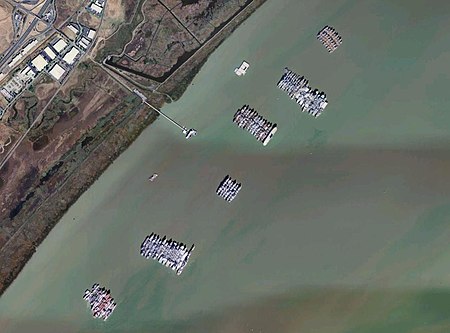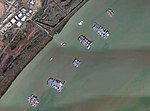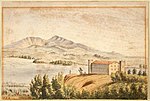National Defense Reserve Fleet

The National Defense Reserve Fleet (NDRF) consists of ships of the United States, mostly merchant vessels, that have been mothballed but can be activated within 20 to 120 days to provide shipping during national military emergencies, or non-military emergencies such as commercial shipping crises. The NDRF is managed by the U.S. Department of Transportation's Maritime Administration (MARAD). It is distinct from the United States Navy reserve fleets, which consist largely of naval vessels. NDRF vessels are at the fleet sites at James River, Virginia (James River Reserve Fleet); Beaumont, Texas (Beaumont Reserve Fleet); and Suisun Bay, California (Suisun Bay Reserve Fleet); and at designated outported berths. Former anchorage sites included Stony Point, New York (Hudson River Reserve Fleet); Wilmington, North Carolina; Mobile, Alabama; Astoria, Oregon; and Olympia, Washington. Through the 2010s, the oldest, most decrepit hulls at Suisun Bay were stripped of toxic materials, then broken up in Texas, California, or Asia. Twenty of the most polluting mothball ships were recycled by 2012, and another 32 by 2017. At its peak, in 1950, the NDRF had 2,277 ships in lay-up. In 2003, it had 274. In July 2007, it held 230 ships, primarily dry-cargo ships, with some tankers, military auxiliaries, and other types. In December 2021, the number of ships was down to 91.
Excerpt from the Wikipedia article National Defense Reserve Fleet (License: CC BY-SA 3.0, Authors, Images).National Defense Reserve Fleet
Zur Magdeburger Straße, Wanzleben-Börde
Geographical coordinates (GPS) Address Nearby Places Show on map
Geographical coordinates (GPS)
| Latitude | Longitude |
|---|---|
| N 38.07161 ° | E -122.09673 ° |
Address
Zur Magdeburger Straße 26
39164 Wanzleben-Börde (Groß Rodensleben)
Sachsen-Anhalt, Deutschland
Open on Google Maps








